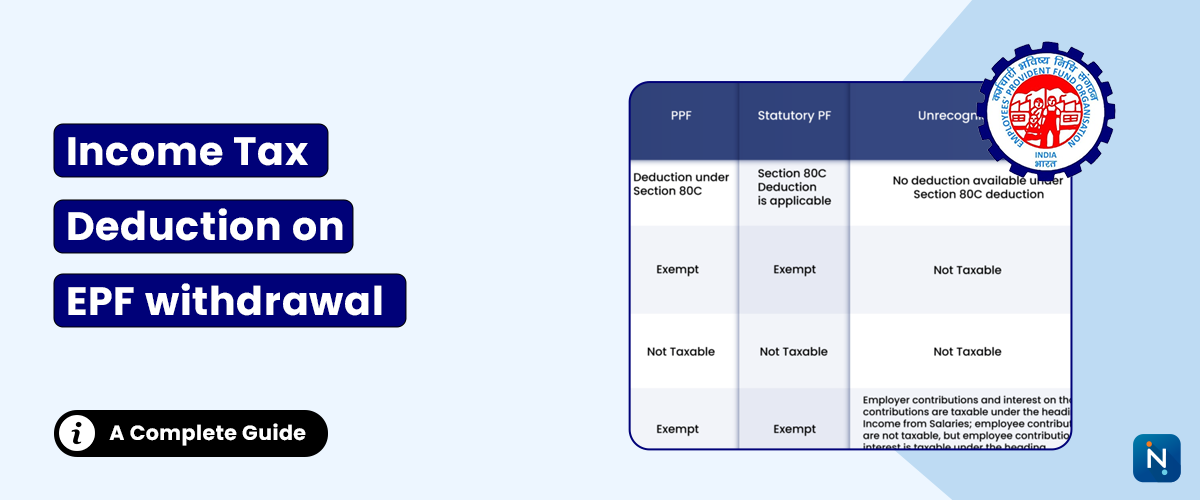
Income
Tax Deduction on EPF Withdrawal: Rules, Rates, and Tips
The Employees’ Provident Fund (EPF) is designed to
provide long-term financial security to salaried employees in India. While EPF
contributions offer tax benefits, withdrawing your EPF before completing 5
years of continuous service can attract tax deductions.
In this guide by IndiaLends, we’ll explain when EPF
withdrawals are taxable, how TDS on EPF withdrawal works, and tips to
avoid unnecessary tax outgo.
When is
EPF Withdrawal Tax-Free?
EPF withdrawals are completely tax-free if:
When is
EPF Withdrawal Taxable?
Your EPF withdrawal becomes taxable if:
In such cases:
TDS on
EPF Withdrawal Before 5 Years
Here’s a quick reference table:
|
Withdrawal Amount |
TDS Rate |
Conditions |
|
Less than ₹50,000 |
No TDS |
Still taxable if before 5 years |
|
₹50,000 or more |
10% TDS |
If PAN is provided |
|
₹50,000 or more |
30% TDS + cess |
If PAN not provided |
Note: No TDS if the withdrawal is due to illness,
closure of company, or termination beyond your control.
How to
Avoid TDS on EPF Withdrawal
Example
of Tax Deduction on EPF Withdrawal
If you worked for 3 years and your total EPF balance
is ₹2,00,000:
EPF
Withdrawal vs Personal Loan
Withdrawing EPF early can reduce your retirement corpus and
may trigger taxes. If you need funds urgently, a personal loan from
IndiaLends can be a smarter alternative, offering quick disbursal
without affecting your EPF savings.
Frequently
Asked Questions (FAQs)
Q1. Is EPF withdrawal after 5 years taxable?
No, it is completely tax-free if withdrawn after 5 years of continuous service.
Q2. How can I avoid TDS on EPF withdrawal?
Submit Form 15G/15H (if eligible) and ensure PAN is linked to your EPF account.
Q3. What happens if I withdraw EPF before 5 years?
It becomes taxable, and TDS will be deducted if withdrawal is ₹50,000 or more.
Q4. Is there TDS on EPF withdrawal of ₹40,000?
No TDS, but it will still be taxable if withdrawn before 5 years of service.
Q5. Can IndiaLends help me withdraw EPF?
IndiaLends does not process EPF withdrawals but can help you get instant
personal loans to cover urgent needs without touching your EPF savings.